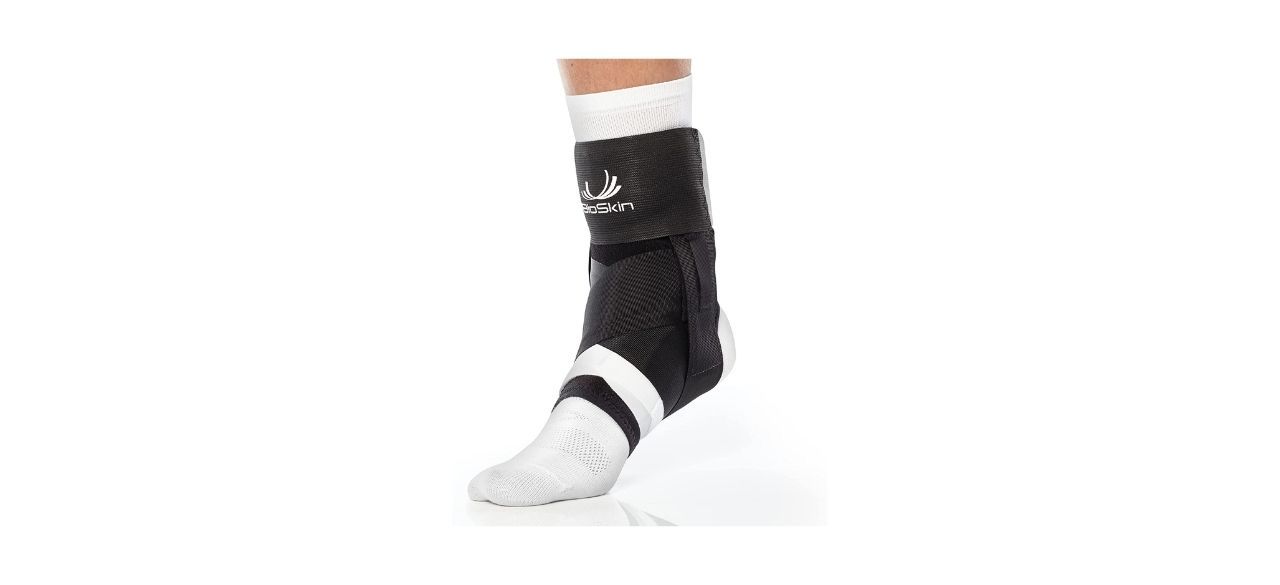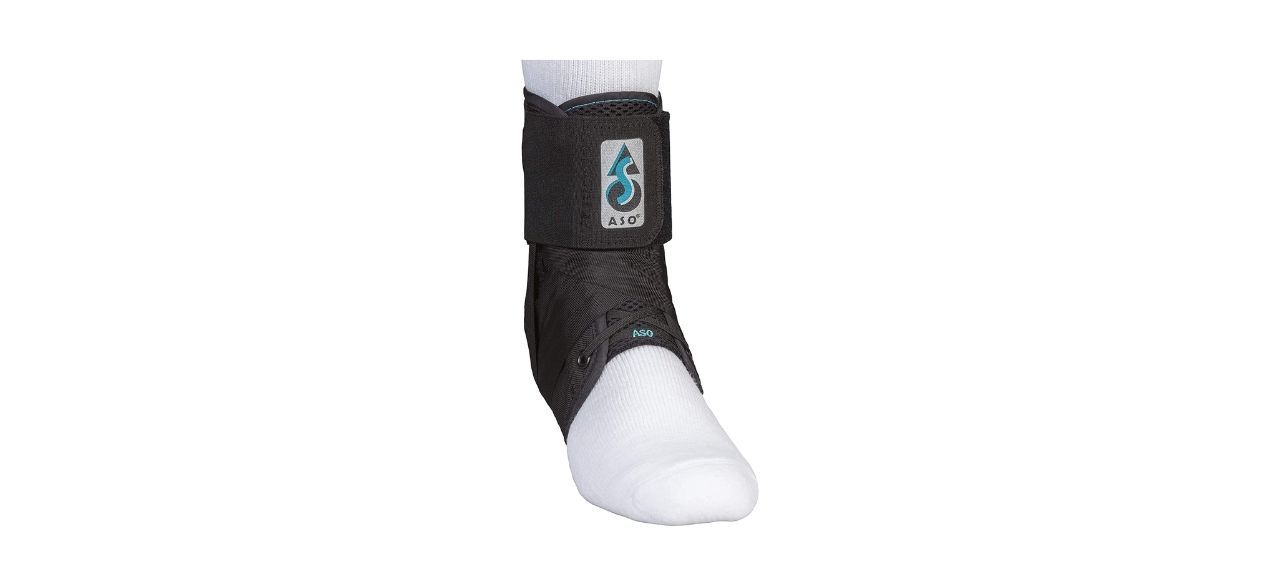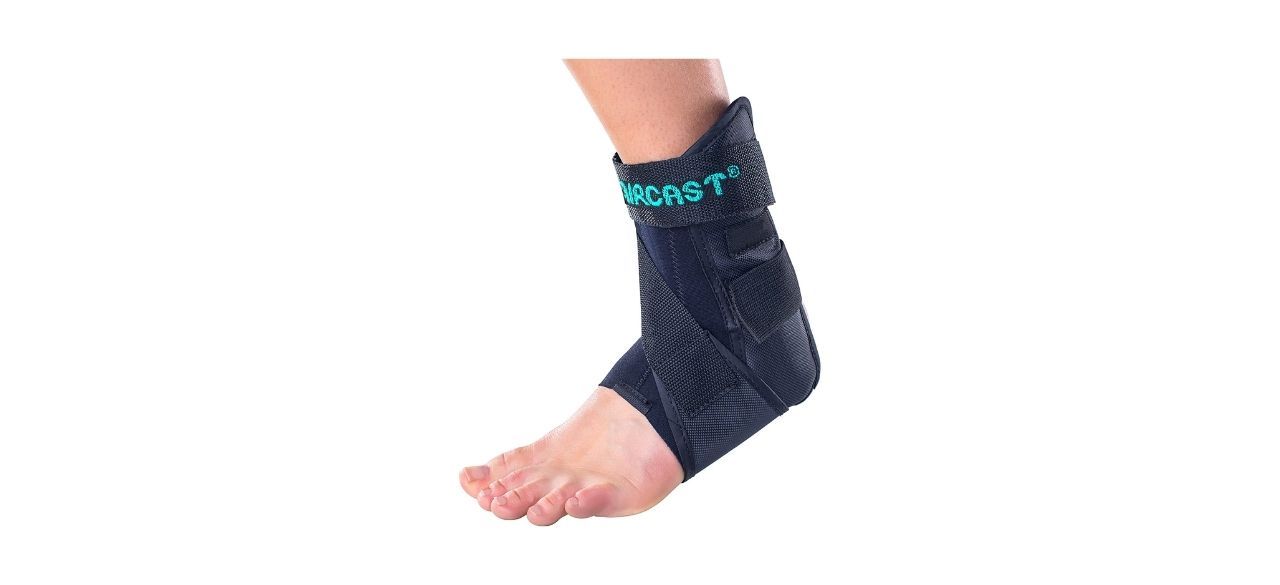Which ankle brace is best?
Every year, about a million people seek medical attention for ankle injuries, mainly sprains and fractures. For most, it can take two to three months to fully recover from such an injury. Fortunately, a good ankle brace can help speed recovery time and lower the risk of reinjury.
The type of brace you choose — compression, rigid or semi-rigid — should depend on the injury you have and the brace’s main purpose. If you need something supportive that will protect your ankle from future injuries, consider the BioSkin TriLok Ankle Support Brace.
What to know before you buy an ankle brace
Benefits
One of the main benefits of an ankle brace is the support and stability it provides to the joint, especially during recovery. The correct brace can help prevent excessive pressure on the ankle, protect it and reduce inflammation. Some braces, such as rigid ones, are designed to limit mobility, which is especially useful for fractures.
Some athletes wear an ankle brace while exercising even if they haven’t been injured. This is a great way of preventing unnecessary injuries, because it helps the athlete focus on their form and provides additional support to the joint.
Those with arthritis or other degenerative joint conditions may also want to wear an ankle brace to soothe any discomfort or pain. You may also want to wear a wrist brace to help with repetitive wrist strain or injury.
Compression braces
Compression braces, or compression sleeves, are popular for those who have sustained a minor ankle injury, such as a slight sprain. They combine heat and compression to alleviate pain and reduce swelling. Most compression braces are lightweight and flexible enough for daily use, making them suitable for minor exercise as well.
Rigid braces
As the name implies, rigid ankle braces have a hard outer shell designed to prevent the ankle from moving. These are ideal for those who’ve injured their joint and need to avoid aggravating it further. Certain rigid braces have a built-in compression gel pad that helps with swelling and pain. These provide optimal support and are best for recovery and rehabilitation after a severe injury.
Semi-rigid braces
Semi-rigid ankle braces offer a mid-range level of support, making them extremely versatile. There are two main types of semi-rigid brace: hinged and lace-up.
- Hinged braces allow for general movement while preventing the ankle from rolling. Many hinged braces are adjustable and flexible, making them great for daily use.
- Lace-up braces are more versatile, with adjustable levels of tightness around the ankle and foot. For this reason, many athletes wear them while exercising.
Limitations
Ankle braces can be indispensable when it comes to preventative care, pain alleviation and support. But they do come with a few limitations.
Prolonged use of an ankle brace may negatively affect athletic performance. And braces are generally recommended for preventative use or minor injuries; they may not be useful when healing from major injuries.
Additionally, the wrong type of ankle brace may not be effective. Worst case scenario, it may even cause further harm. And choosing the wrong size or fit may result in issues such as chafing or poor ankle support.
What to look for in a quality ankle brace
Size
Ankle braces usually follow the same sizing as shoes. In some cases, the brace may have its own sizing chart. Double-check the size and fit of any brace you’re considering. It should provide the right amount of support without cutting off circulation or causing other issues.
Construction
Compression ankle braces are typically lightweight, breathable and elastic. As a result, they allow some mobility. Most compression braces are made from materials such as neoprene or nylon, but some are knitted for extra compression and durability. A few compression braces are infused with copper to accelerate healing.
Rigid braces are made from hard plastic with gel or foam padding inside for support and comfort. Semi-rigid, lace-up braces are more flexible but still durable and supportive.
Most hinged braces are similar to rigid braces with a hard plastic exterior. Some hinged braces have patented technology that lets them mold to the wearer’s ankle and foot.
Purpose
Whether you intend to use the ankle brace as preventation or you want to help speed recovery from an injury, the brace you choose should reflect that purpose.
Determine why you need the brace and choose one accordingly. For instance, if you need something for stability, a rigid or semi-rigid brace may be best. If you need to be able to wear it on the go, a compression or lace-up brace may be better.
How much you can expect to spend on an ankle brace
Compression braces cost as little as $10, while rigid braces or those made from higher-quality materials can cost $100 or more.
Ankle brace FAQ
How long should I wear an ankle brace?
A. If you’re recovering from a serious injury, wear your ankle brace as directed by your doctor. This may mean wearing it for four to six weeks or until the ankle is fully healed. If you’re using a brace for preventation, only wear it when performing activities that require additional support.
How do you clean an ankle brace?
A. Wash a cloth ankle brace carefully by hand using mild detergent and cold water. If your brace has metal or plastic parts, check the manufacturer’s guide for instructions.
Can an ankle brace weaken my ankle?
A. As long as the brace doesn’t unnecessarily restrict up-and-down motion, it shouldn’t weaken or damage the joint. Some braces, such as rigid or lace-up braces, may immobilize your ankle. If worn incorrectly, these could cause your ankle’s strength to decline.
What’s the best ankle brace to buy?
Top ankle brace
What you need to know: This compression sleeve provides maximum overall ankle and foot support, especially to those with a tendency to roll or sprain their joint.
What you’ll love: With adjustable straps that promote good foot and ankle posture, this brace helps reinforce injured joints and tendons. The material is soft, moisture-wicking and designed to prevent odor buildup.
What you should consider: It can be a challenge to put on at first.
Where to buy: Sold by Amazon
Top ankle brace for the money
What you need to know: Few braces can match how supportive and durable this one is, especially at this price.
What you’ll love: This stabilizing brace has an elastic closure and figure-eight style straps for optimal stability. It has a low profile, so it’ll fit in nearly any shoe for all-day wear. Plus, it has a bilateral design for left and right foot use.
What you should consider: It’s on the rigid side and works best for light or reduced activity.
Where to buy: Sold by Amazon
Worth checking out
Aircast AirSport Ankle Support Brace
What you need to know: For those needing extra stability throughout the day, this brace is a great choice.
What you’ll love: With just one strap, this brace is easy to put on and remove when you need a little extra support or protection from injury. It’s adjustable and fits inside shoes for those who need it while playing sports.
What you should consider: It isn’t very comfortable for extensive use due to the hard material that fits beneath the foot.
Where to buy: Sold by Amazon
Want to shop the best products at the best prices? Check out Daily Deals from BestReviews.
Sign up here to receive the BestReviews weekly newsletter for useful advice on new products and noteworthy deals.
Angela Watson writes for BestReviews. BestReviews has helped millions of consumers simplify their purchasing decisions, saving them time and money.
Copyright 2023 BestReviews, a Nexstar company. All rights reserved.









































